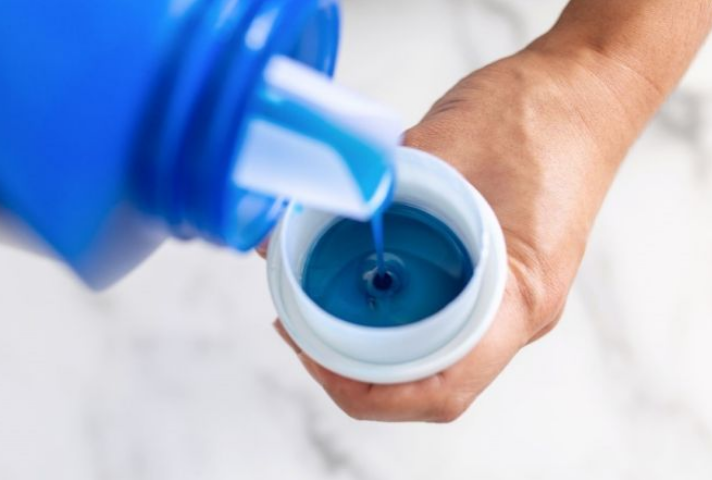How Do You Use HPMC in Liquid Detergent?
HPMC Uses In Detergent
Liquid detergents have become an integral part of household cleaning routines due to their convenience, effectiveness, and versatility. To enhance the performance and stability of these products, manufacturers continually incorporate various additives. One such additive gaining prominence is Hydroxypropyl Methylcellulose (HPMC), a cellulose derivative widely recognized for its thickening, stabilizing, and film-forming properties.
Hydroxypropyl methylcellulose (HPMC), also known as daily chemical grade hydroxypropyl methylcellulose, is a common additive used in detergents to improve their performance and user experience:
Liquid Detergents
HPMC thickens and stabilizes liquid detergents, making them easier to pour and maintain their consistency. It also improves compatibility and can help ensure the detergent is safe, non-toxic, and cost-effective.
Dishwashing Detergents
HPMC can help control the amount of foam produced, making rinsing easier and reducing the risk of residue build-up on dishes.
How Do You Use HPMC in Liquid Detergent?
1. Understanding Hydroxypropyl Methylcellulose (HPMC):
Chemical structure and properties of HPMC.
Key characteristics relevant to detergent formulations: water solubility, viscosity, film-forming ability, and compatibility with other ingredients.
2. Functions and Benefits of HPMC in Liquid Detergents:
Thickening agent: Enhancing viscosity for improved product stability and performance.
Stabilizer: Preventing phase separation and maintaining homogeneity.
- Film Former: HPMC contributes to the formation of a protective film on surfaces, aiding in dirt removal and stain prevention.
- Compatibility Enhancer: It facilitates the incorporation of various active ingredients without compromising the product's integrity.
- Environmental and User-Friendly Attributes: HPMC is biodegradable, non-toxic, and has a low irritation potential, making it a safe choice for both the environment and users.
3. Incorporation Methods
- Direct Addition: Mix HPMC directly into the liquid detergent base.
See also:Understanding LCD Panel Applications in Various Industries
Key Considerations When Choosing Sodium Formate for De-Icing
What Are Non Explosive Demolition Agents Used For?
Understanding the pH Value of 1,3-Dimethylurea
Sodium Formate Granule: 5 Key Benefits for Oilfield Applications
Potassium Diformate: Key Role in Chemical Processing and Formic Acid
Sand Conveyor Belt vs. Traditional Methods: Which is Best?
- Pre-Hydration: Dissolve HPMC in water prior to blending with other ingredients to ensure proper dispersion.
- Shear-Thinning Techniques: Utilize mechanical shear to disperse HPMC evenly and achieve the desired viscosity.
- Temperature Considerations: Maintain optimal temperature ranges for HPMC dispersion and activation.
4. Formulation Considerations
- HPMC Concentration: Determine the appropriate dosage based on desired viscosity and product performance.
- Compatibility with Surfactants and Other Additives: Assess interactions to avoid formulation instability or performance issues.
- pH Compatibility: Ensure HPMC stability within the desired pH range of the detergent formulation.
- Regulatory Compliance: Adhere to relevant regulations and guidelines governing the use of HPMC Uses in detergent products.
5. Performance Evaluation and Quality Assurance
- Rheological Analysis: Assess viscosity, shear-thinning behavior, and flow properties of the formulated detergent.
- Stability Testing: Evaluate long-term stability under various storage conditions to ascertain shelf-life and performance consistency.
- Cleaning Efficacy: Conduct tests to measure the detergent's ability to remove stains, soils, and residues effectively.
- User Acceptance Testing: Solicit feedback from consumers to gauge satisfaction with product performance, handling, and usability.
6. Case Studies and Practical Applications
- Formulation Examples: Showcase the incorporation of HPMC in liquid detergent products for various applications (e.g., laundry detergents, dishwashing liquids, surface cleaners).
- Performance Comparisons: Compare HPMC-enhanced formulations with conventional counterparts.
- Market Trends and Consumer Preferences: Analyze factors influencing the adoption of HPMC in liquid detergent formulations.
7. Future Directions and Innovations
- Advancements in HPMC Technology: Explore novel formulations, modified derivatives, and enhanced functionalities.
- Sustainable and Eco-Friendly Initiatives: Investigate renewable sources of cellulose derivatives and biodegradable alternatives.
- Integration of Smart Technologies: Incorporate HPMC in sensor-enabled formulations for real-time monitoring of cleaning performance and product usage.
See also:Conquering Your Acetone Woes: Unmasking the Top 5 Pain Points and Solutions
Cross Drill Bit: The Ultimate Guide to Choosing the Right One
What Are the Benefits of Green Iron Oxide Pigment?
- Previous: None
- Next: None


